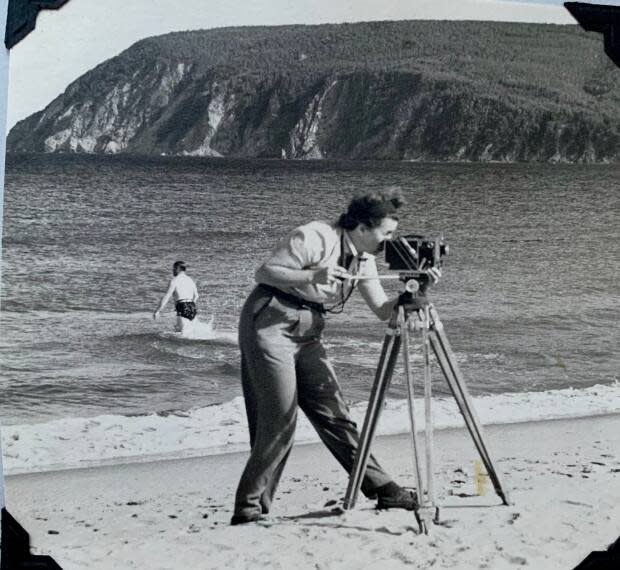New exhibit digitizes works of pioneering Nova Scotian filmmaker

When Jennifer VanderBurgh started researching the life of pioneering Nova Scotian filmmaker Margaret Perry, she encountered a problem.
Although Perry made dozens of films for the Nova Scotia Film Bureau between 1945 and 1969 detailing life in the province, the Archives' records containated little about her.
Although the Nova Scotia Archives had original 16-millimetre copies of her films, the only other holdings they had were two photos of Perry, a copy of a National Film Board documentary about Perry and an essay about her.
The six-year effort VanderBurgh was part of turned up information through the National Film Board, Library and Archives Canada, and Perry's past colleagues. But the grail was a trove of photos, journals, scrapbooks, slides and negatives obtained from Perry's family.
"That really gave us an incredible sense of Margaret Perry in her own work, talking about her artistic development, some of the motivations for her filmmaking," said VanderBurgh, a professor at Saint Mary's University who is also the lead on a project that's worked to bring greater awareness to Perry's work and make it more publicly accessible.
The payoff is a new Nova Scotia Archives exhibit that digitized 47 films Perry made for the Nova Scotia Film Bureau. The films can be streamed from the archives' website or through its YouTube page.
The exhibit also includes biographical information on Perry and copies of her scrapbooks. There are even curriculum guides to use the films as lesson plans in classrooms, from Grade 8 social studies to a post-secondary setting.
While the department was called the Nova Scotia Film Bureau, until 1959 its only employee was Perry. She acted as director, cinematographer, location scout, script writer, sound recorder, driver and editor, just to name a few roles.
The films served a variety of roles, from promoting Nova Scotia as a tourism destination to a place for industrial development, and they were sometimes used in classrooms.
In a modern setting, Perry's films have struggled to be viewed as being more than propaganda, said VanderBurgh.
"Every artwork is a representation, right? It's not a mirror of actuality ... this is true of all artworks, but government films have been dismissed, you know, rather unfairly," said VanderBurgh.

The Nova Scotia reflected in Perry's films is one of a nature lover's paradise, filled with forests, lakes and oceans, but it's also modern.
Whether it's the construction of the Canso Causeway linking Cape Breton Island to the mainland, or being home to "the largest self-contained steel plant in [North] America" in Sydney, Nova Scotia is portrayed as a place where the past meets the present.
"They were influential as far as vehicles of promotion, but they're also incredibly beautiful," said VanderBurgh. "I think that people will really enjoy them as documentaries, but also as artworks."
Some of Perry's films were screened at this year's FIN Atlantic International Film Festival and the archives' exhibit was officially launched to tie in with the timing of the film festival.
Leanna Griffith is Perry's granddaughter. She attended the events in Halifax and called it overwhelming, but in a good way.

"All these movies were stored in my parents' basement for such a long time and now all of a sudden I'm at the Cineplex theatre [at Park Lane] watching these movies. It's a little bit mind-blowing," she said.
Griffith said her grandmother wasn't one to toot her own horn, so she's happy her grandmother's work is being honoured.
"To see that people are interested and want to be able to get her stuff out there so the public could know about it and experience it was really rather thrilling," said Griffith.
MORE TOP STORIES


